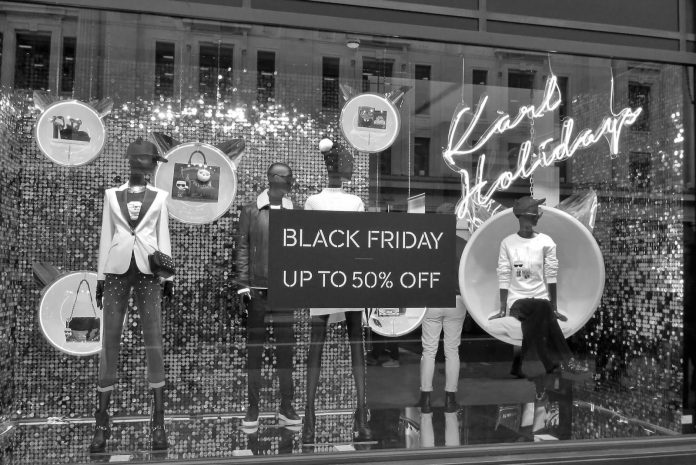Over the years, Black Friday (and the long weekend to which it is attached) has grown to reach near-mythical levels of importance in the commercial calendar. Merchants scramble to take maximum advantage of its possibilities, consumers eye the latest goods hungrily, and brick-and-mortar stores simultaneously roll out the red carpet and batten down the hatches.
And while the absurd crowds can certainly be dangerous, you can’t blame retailers for jumping on this particular bandwagon — not with the amount of money set to change hands as Thanksgiving draws to a close. US retailers earned $7.9 billion on Black Friday alone last year. A solid Black Friday strategy can turn an average year into a great one.
So if you’re a seller, you should be doing everything you can to nail the 2019 instalment of this momentous sales extravaganza. Here’s what you need to know about getting it done:
It’s a great opportunity for a stock clearout
As much as you might want to focus on the most expensive items in your inventory, Black Friday isn’t all about costly games consoles and new TVs — it’s also a great time to offload any items you’ve been struggling to sell for quite some time. And since there’s a reasonable chance you’ll want to bring in seasonal products for the festive period, you have a compelling reason to get your lingering summer stock out of your storage area, even at a steep discount.
The contributing factor here is hunger of Black Friday. Because it’s so heavily hyped as a time for cut-price buys, shoppers not only tend to assume that discounts are more meaningful than they really are, but they also are so eager to participate (once again, fear of missing out proves its power) that if they can’t find a suitable high-value product, they’ll settle for whatever they can find, even if it isn’t quite what they were anticipating.
It doesn’t even matter so much that your old stock doesn’t really match the typical Black Friday fare. Just package it in a fresh way. Throw twenty items into a Black Friday Mystery Bargain Box, for instance. People love mystery buys.
Your website needs to be ready to handle the traffic
It’s possible that you’ve never really experienced the destructive power of Black Friday traffic. Perhaps you didn’t have an online store last November, or maybe you just didn’t make a real effort to benefit from Black Friday and didn’t get any visits. But if you want to sell like the top retailers do, you need to be able to meet the demand, or else you’ll mainly annoy people (we get stressed enough as it is, then add in the Black Friday rush…).
The best thing to do is anticipate a level of traffic far beyond your usual and make sure that your web hosting can rise to the occasion. If you have a fully-hosted store, then check that you’re on a suitable performance tier, and upgrade if necessary. If you have a self-hosted store, then check the terms of your agreement — if you don’t think your hosting can measure up, consider moving to a new host ASAP.
But it isn’t enough to just handle traffic without shutting down, because every order needs to be fully processed and fulfilled. How many orders can you handle? It’s no use hitting 2000 orders through your website if your shipment process is only capable of dealing with 400. Not only will you end up processing a lot of refunds, but you’ll also hugely damage your brand perception. Be ambitious, but don’t make promises you can’t cope with.
It’s (almost) never too early to start the hype
When should you roll out the first promotional emails for Black Friday? A few days before Thanksgiving? The previous Sunday? How about right now? The entire Thanksgiving weekend runs heavily on hype — shoppers look forward to it so eagerly that the enthusiastic momentum drags the money from their wallets in quick fashion — and the best way to get involved is to start drip-feeding whatever you bring to the table.
You’ll need to get everything from your personalization to your subject line formatting firing on all cylinders to really work your audience into a frenzy. By the time the fateful week arrives, you should have people on tenterhooks, reading to convert that long-gestating desire into action. If it sounds like a lot of work, well, that’s because it is — but there’s a reason why 81& of US retailers (and 91% of UK retailers) got into the Black Friday spirit (hint: $$$).
It’s smart to fragment the long weekend
Black Friday is just the first part of a 4-day stretch of big spending, culminating in what has become known as Cyber Monday. With people less likely to be visiting stores in person on the Monday, the name was chosen to reflect the intention to get people buying online, and you can approach it that way if you like — really, though, it mainly matters that you treat it differently in some way, even if it’s superficial.
This is because you’re not going to reach someone who already indulged in Black Friday (or elected to skip it) with a clear Black Friday continuation. Approach Cyber Monday as a distinct event, even though it obviously isn’t really, and you can stand a chance of bringing in some stragglers and convincing them that Cyber Monday has something totally fresh to offer.
So change up your discounts. Offer different products. Phrase things differently. That way, you get two bites at the Thanksgiving retail cherry.
To recap, you must figure out which products you want to offload (and how you’re going to do it), get your store ready to handle your maximum sales potential, get the hype machine rolling, and give Cyber Monday a distinct flair. Do all of that and you’ll be in a strong position to bring in the big bucks.
Find a Home-Based Business to Start-Up >>> Hundreds of Business Listings.
















































